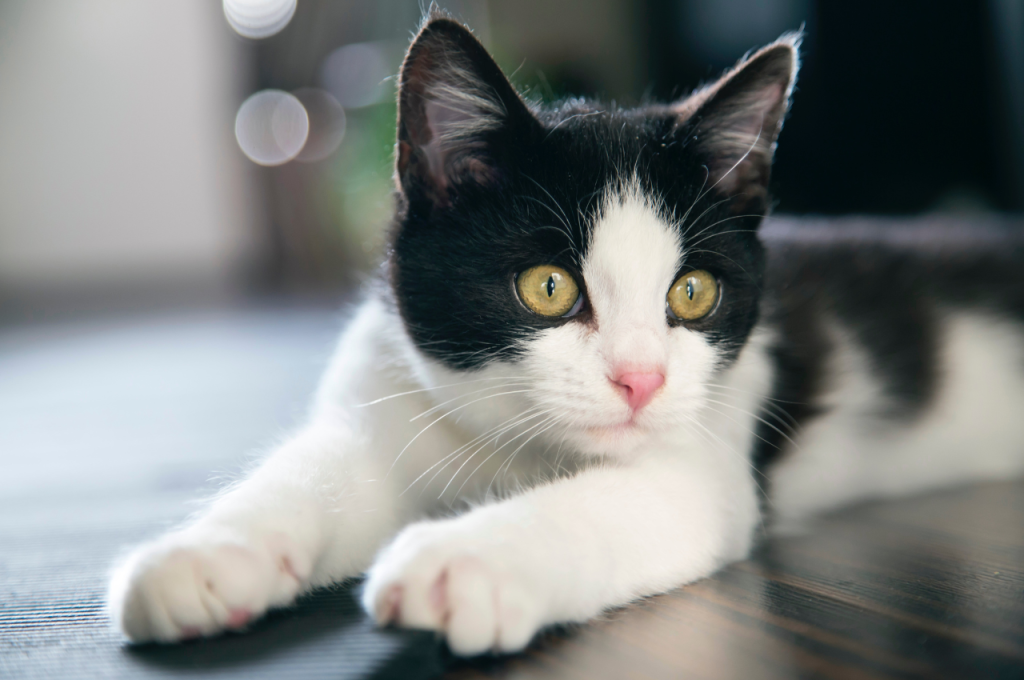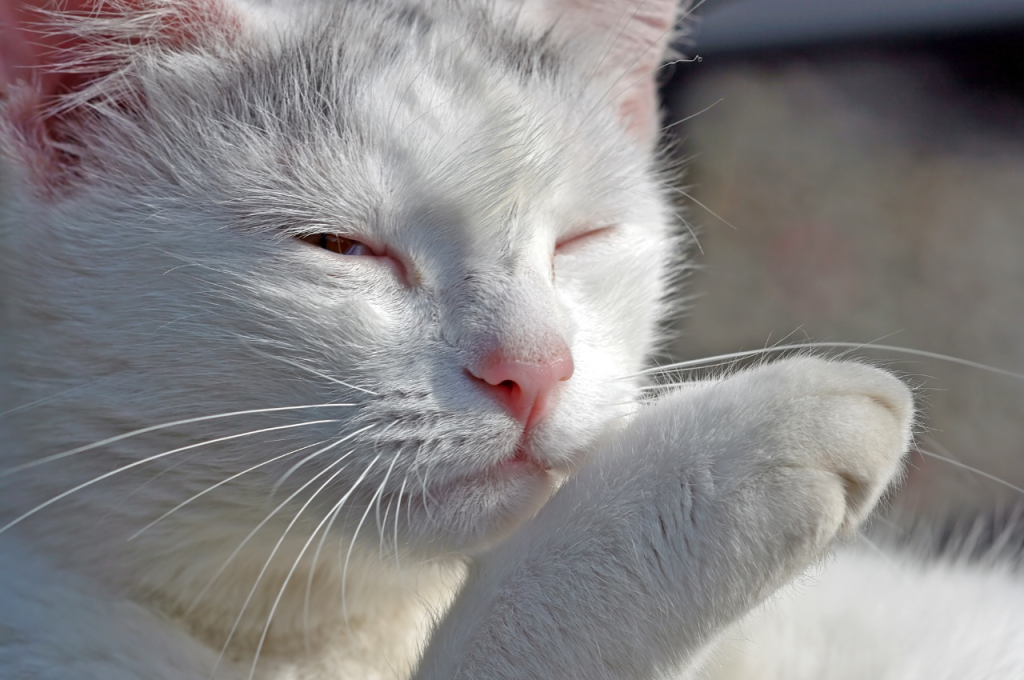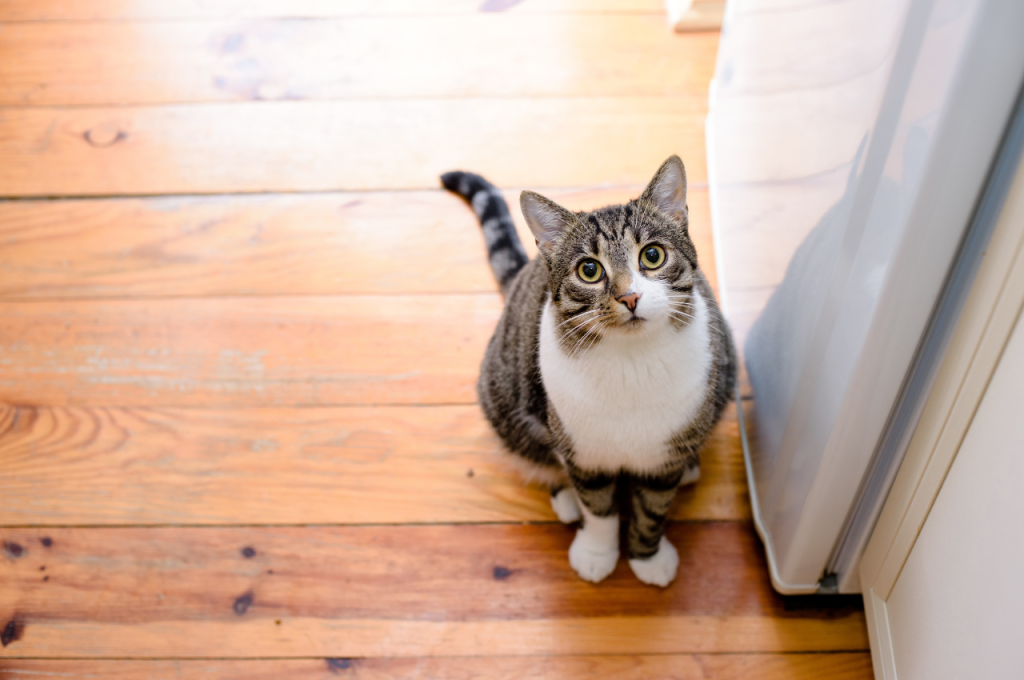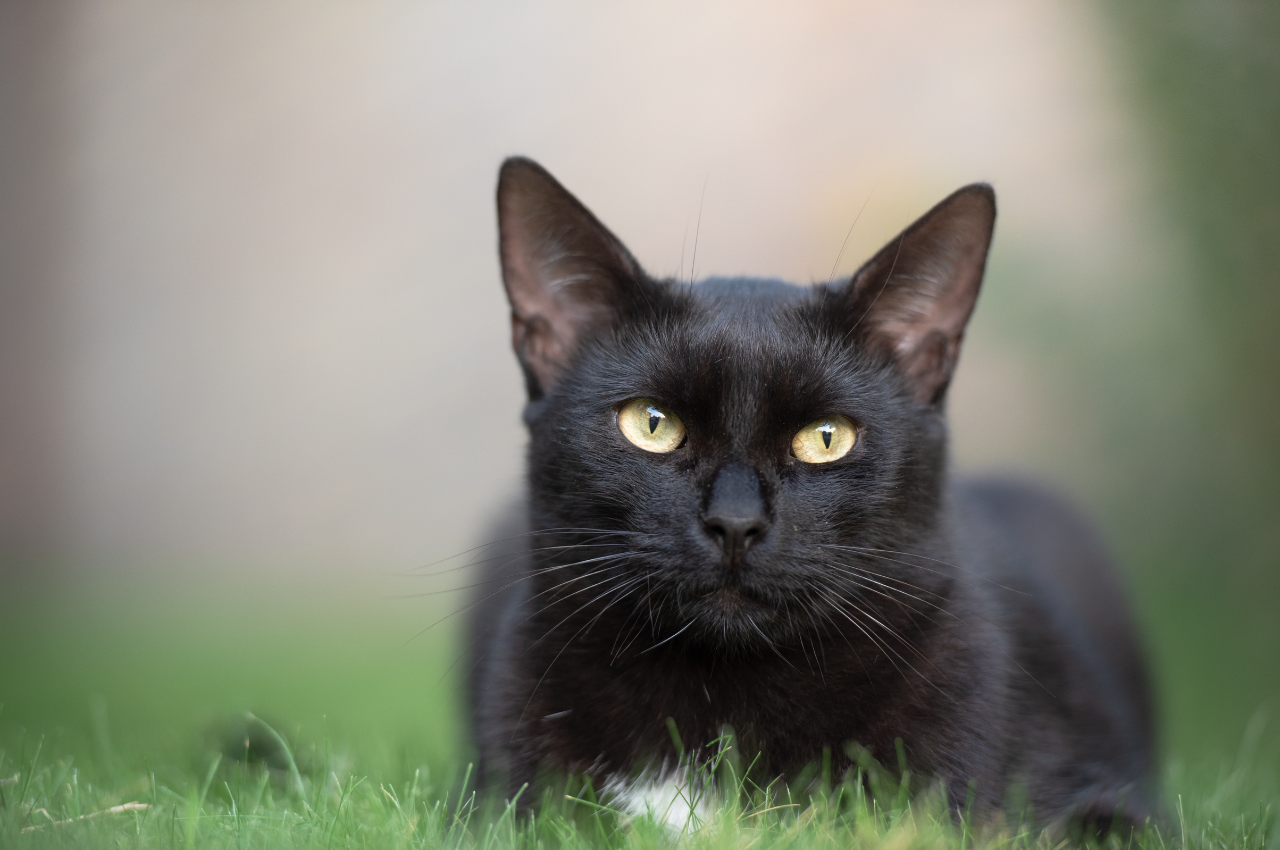Cats have a complex psychology that is influenced by their evolutionary history and domestication. Understanding cat psychology can help owners provide better care and create a more harmonious relationship with their feline companions.
Cats are known for their independence, but they also form strong bonds with their human caregivers. Learning about cat psychology can offer insights into their behaviors, communication, and emotional needs. This knowledge can lead to a deeper understanding of our feline friends, ultimately enriching the human-cat bond. Whether it’s interpreting body language, addressing stress-related behaviors, or simply fostering a more empathetic connection, delving into cat psychology can be incredibly rewarding for both cats and their owners.
The Enigmatic World of Cats
Exploring cat psychology facts opens up the enigmatic world of cats, revealing their complex and fascinating behaviors. Cats communicate their moods through subtle cues, such as purring when content or kneading to show affection. Understanding these behaviors helps decode their unique personalities. For instance, cats often hide when stressed or unwell, a survival instinct from their wild ancestors. Recognizing these signs can help cat owners provide better care and strengthen their bond with their feline companions.

Feline Intelligence: Beyond The Myths
Cats exhibit intelligence beyond common myths, solving problems with creativity.
Emotional Depth in Whiskers
Cats express emotions through subtle whisker movements, reflecting their deep feelings.
Communicative Tails and Whiskers
Cats are known for their mysterious and enigmatic nature, and a big part of their communication happens through their tails and whiskers. Understanding these subtle signs can provide valuable insights into a cat’s mood and intentions. Let’s delve into the intriguing world of communicative tails and whiskers to uncover the hidden language of our feline friends.
Tales Told by Tails
A cat’s tail is a powerful tool for expressing emotions and intentions. An upright tail signifies confidence and happiness, while a puffed-up tail indicates fear or aggression. A gently swaying tail signals contentment, whereas a thrashing tail may indicate irritation or excitement.
Whisker Signals: Understanding The Subtle Signs
Whiskers are not just for aesthetics; they play a crucial role in a cat’s sensory perception and communication. When a cat’s whiskers are pulled back against its face, it may be feeling fearful or anxious. Conversely, forward-facing whiskers indicate curiosity and alertness.
The Purr Conundrum
When it comes to cats, one of their most intriguing behaviors is their ability to purr. While it may seem like a simple expression of contentment, there is much more to it than meets the eye. In this article, we will explore the fascinating world of cat psychology and delve into the secrets behind the purr conundrum. From the reasons behind purring to its healing powers, we will unravel the mysteries of this unique feline behavior.
Purring: More Than Just Contentment
Have you ever wondered why cats purr? While it is commonly associated with a state of contentment, purring is actually a multifaceted behavior that serves various purposes. It is not only a sign of happiness, but also a means of communication. When a cat purrs, it can signify a range of emotions, including relaxation, comfort, and even pain. It is their way of expressing themselves and communicating with their owners.
Additionally, purring is not limited to domestic cats. It is a behavior that is observed across the entire feline species, from the smallest house cat to the largest lions and tigers. This universal behavior suggests that purring has deep evolutionary roots and serves an important function in the feline world.
The Healing Power of a Cat’s Purr
Did you know that a cat’s purr has healing properties? It may sound surprising, but scientific studies have shown that the low-frequency vibrations produced during purring have therapeutic effects on both cats and humans. The frequency range of a cat’s purr, which is between 25 and 150 Hertz, has been found to promote healing and provide a sense of calmness.
These vibrations have been linked to various health benefits, including reducing stress, lowering blood pressure, and even aiding in the healing of bones and tissues. It is believed that the vibrations stimulate the release of endorphins, which are the body’s natural painkillers, promoting a sense of well-being and relaxation.
Furthermore, the healing power of a cat’s purr extends beyond physical health. It has been observed that spending time with a purring cat can also have a positive impact on mental health. The rhythmic sound of a cat’s purr can help reduce anxiety, alleviate depression, and provide comfort during times of emotional distress.
So, the next time you hear your furry friend purring, remember that it is not just a simple act of contentment. It is a complex behavior that serves various purposes and has the power to heal both body and mind.
A Gaze That Speaks Volumes
When it comes to understanding our feline friends, their eyes can be windows into their thoughts and emotions. Cats have a unique way of communicating through their gaze, and it’s fascinating to decipher the messages hidden behind those beautiful eyes. In this article, we will explore the intriguing world of cat psychology and delve into the different aspects of their gaze.
Deciphering The Feline Stare
One of the most captivating aspects of cat psychology is their intense stare. If you’ve ever experienced a cat locking eyes with you, you know how mesmerizing it can be. But what does it mean? Cats use their gaze to convey various messages, and understanding these cues can help us better understand our feline companions.

- Cats often use prolonged eye contact as a sign of trust and affection. When a cat gazes at you with soft eyes, it means they feel comfortable and safe in your presence.
- A direct, unwavering stare, on the other hand, can be a challenge or a display of dominance. This is especially common during territorial disputes or encounters with other cats.
- It’s important to note that a cat’s stare is not always a form of aggression. Sometimes, they may simply be observing their surroundings or focusing on something that has caught their attention.
Blinking Slowly: A Sign of Trust
In addition to their intense gaze, cats also communicate their trust through a specific behavior: slow blinking. When a cat blinks slowly at you, it’s their way of showing affection and trust. This behavior is often referred to as a “kitty kiss” or a “cat blink.”
Next time your cat blinks at you, try blinking back slowly. This reciprocal action can further strengthen the bond between you and your feline companion. It’s a simple yet powerful way to communicate that you understand and reciprocate their trust.
Understanding the language of a cat’s gaze can significantly enhance the relationship between humans and cats. By paying attention to their eye movements and responding accordingly, we can create a deeper bond and enrich the lives of our feline friends.
The Intricacies of Feline Play
Explore the fascinating world of feline play and uncover intriguing cat psychology facts. Discover the intricacies of their behavior, from hunting instincts to interactive play, in this captivating exploration of the feline mind.
Cats are known for their playful nature, and playtime is an important aspect of their lives. Feline play behavior is not just about having fun, but it also helps them to develop necessary skills such as hunting, stalking, and pouncing. Understanding the intricacies of feline play can help cat owners to provide their furry friends with a healthy and stimulating environment.
Play Behavior as a Hunting Simulation
Cats are natural-born hunters, and their play behavior is an essential part of their hunting simulation. When cats play, they are practicing their hunting skills, such as stalking and pouncing. These skills are crucial for their survival in the wild, but for indoor cats, playtime is a way to satisfy their natural instincts. Cat toys such as feather wands and interactive toys are great for simulating hunting behavior and providing a healthy outlet for their energy.
Interactive Play and Mental Stimulation
Interactive play is an essential aspect of feline play behavior. Cats enjoy playing with their owners and engaging in activities that challenge their minds. Interactive play provides mental stimulation, which is crucial for their overall well-being. Playing with puzzle toys, hiding treats around the house, and teaching them new tricks are great ways to keep your cat mentally stimulated. Additionally, interactive play also strengthens the bond between cats and their owners, making playtime a fun and rewarding experience for both.
In conclusion, understanding the intricacies of feline play is essential for cat owners who want to provide their furry friends with a healthy and stimulating environment. Play behavior is not just about having fun, but it also helps cats to develop necessary skills, such as hunting and stalking, and provides them with mental stimulation. By incorporating interactive play and stimulating toys into their daily routine, cat owners can help their furry friends lead happy and healthy lives.
Bonding with Humans: The Selective Affection
Cats are known for their mysterious and independent nature, but their bond with humans is a fascinating aspect of feline psychology. Understanding how cats form selective affection towards their human companions sheds light on the unique dynamics of the human-cat relationship.
The Human-cat Bond: a Unique Connection
Cats and humans share a distinctive bond that is unlike any other pet-owner relationship. This special connection is rooted in the intricate psychology of felines, making it a captivating subject for cat enthusiasts.
How Cats Choose Their Favorite Person
Cats have a discerning nature when it comes to choosing their favorite person. This selection process is influenced by various factors, including a person’s demeanor, scent, and the quality of their interactions with the cat. Understanding the criteria behind a cat’s choice can provide valuable insights into the human-feline bond.
Sleep Patterns and Dreaming
Cats have long been known for their unique sleep patterns and mysterious dreaming habits. Understanding why cats sleep so much and whether they dream can provide fascinating insights into feline behavior.
Why Cats Sleep so Much
Cats are natural predators, and their sleep patterns reflect this. They are capable of intense bursts of energy followed by long periods of rest to conserve it. On average, cats sleep for 12-16 hours a day, with older cats often sleeping even more. This sleep pattern is a result of their natural instincts and hunting behavior.
Do Cats Dream? Insights Into Feline Sleep
Cats experience Rapid Eye Movement (REM) sleep, which is associated with dreaming in humans. During this phase, their breathing becomes irregular, and they may exhibit twitching or paw movements. While it’s not entirely proven whether cats dream, their sleep behavior suggests that they do. Observing a sleeping cat can provide insights into their mental and emotional well-being.
Coping with Stress and Anxiety
Discover fascinating cat psychology facts and learn how to cope with stress and anxiety in your feline companion. Understand their behavior and find effective strategies to create a calm and harmonious environment for your beloved cat.

Cats are known for their ability to relax and enjoy life, but just like humans, they can experience stress and anxiety. As responsible cat owners, it’s important to understand the signs of stress in cats and how to help them cope with anxiety. In this section, we’ll explore some cat psychology facts related to stress and anxiety, as well as some calming techniques for anxious felines.
Signs of Stress in Cats
Cats are masters at hiding their emotions, but there are some telltale signs that can indicate your feline friend is experiencing stress. Some common signs of stress in cats include:
- Excessive grooming or licking
- Changes in appetite or water intake
- Aggression or irritability
- Hiding or avoiding interaction
- Urinating outside of the litter box
- Excessive meowing or vocalization
If you notice any of these signs in your cat, it’s important to address the underlying cause of their stress and help them feel more comfortable in their environment.
Calming Techniques for Anxious Felines
Thankfully, there are several effective techniques that can help calm anxious cats and reduce their stress levels. Here are some calming techniques you can try with your feline friend:
| Calming Technique | Description |
| Provide a Safe Space | Set up a designated area where your cat can go to feel safe and secure, such as a cozy bed or a cardboard box with a blanket. |
| Use Pheromone Products | Pheromone products, such as sprays and diffusers, can help create a calming environment for your cat. |
| Play Soothing Music | Soft, calming music can help reduce stress and anxiety in cats. |
| Try Massage or TTouch | Gentle massage or TTouch (a specific type of touch) can help calm your cat and promote relaxation. |
| Consider Medication | If your cat’s anxiety is severe, your veterinarian may recommend medication to help reduce their stress levels. |
By using these calming techniques, you can help your cat feel more relaxed and comfortable in their environment. Remember, a happy and stress-free cat is a healthy cat!
The Sixth Sense: Feline Intuition
Cats possess a remarkable sixth sense, known as feline intuition, which allows them to perceive subtle changes in their environment. This instinctive ability stems from their acute observation skills and heightened senses, enabling them to react to emotional and physical cues. Understanding cat psychology facts sheds light on their fascinating intuitive nature.
Sensing The Unseen: Fact or Fiction
Cats have a mysterious ability to sense things beyond human perception. Their sixth sense, often referred to as feline intuition, remains a captivating aspect of their behavior.
How Cats Perceive Their Environment
Cats rely on their acute senses of sight, smell, and hearing to navigate their environment. They can detect subtle movements and hidden sounds with remarkable precision.
Conclusion
Understanding cat psychology can help strengthen the bond with your feline friend. By grasping their behavior, you can provide a nurturing environment that meets their needs. Remember, cats are unique creatures with complex emotions and instincts. Embracing their psychology can lead to a harmonious and fulfilling relationship.
